Title : Effects of Taiwanese indigenous cinnamon (Cinnamomum osmophloeum) leaf hot-water extract on Minimum Inhibitory and Bactericidal Concentrations (MIC and MBC), intestinal and hepatopancreatic histology, nonviable cells, and haemocyte subpopulations in white shrimp (Penaeus vannamei)
Abstract:
White shrimp's immunological and metabolic systems rely on haemocytes, intestines, and the hepatopancreas. The innate immune system combats infections and illnesses. The digestive system interacts with its host, influencing digestion, metabolism, and immunity. C. osmophloeum leaf hot-water extract (CLWE) includes various bioactive components with potential antibacterial action. It could be a natural dietary supplement, safer than organic solvent extracts. This study discovered the effect of CLWE on MIC and MBC, intestinal and hepatopancreatic histology, nonviable cells, and haemocyte subpopulations in white shrimp. Firstly, the MIC and MBC data against Lactobacillus sp. (L. acidophilus, L. plantarum, and L. reuteri) likely exceeded 8000 mg L-1. Furthermore, the MIC and MBC data against Vibrio sp. (V. alginolyticus, V. harveyi, and V. parahaemolyticus) revealed that bacterial colonies could not grow at concentrations greater than 4000 mg L-1.
In the intestinal and hepatopancreatic analysis, CLWE dietary supplementation of white shrimp for 14 days showed the most remarkable effect (p < 0.05) regarding wall thickness, epithelium height, B and R cells in intestinal and hepatopancreatic tissues, respectively. In addition, as a challenge test, the shrimp were infected with V. parahemolyticus injections after 14 days of feeding. According to the challenge test results, CLWE 0.5 and CLWE 5 significantly reduced the proportion of nonviable cells while activating diverse haemocyte subpopulations (p < 0.05). These findings showed that dietary supplementation with CLWE can improve the maintenance of intestinal and hepatopancreatic conditions in white shrimp, and further research into these systems may reveal information on white shrimp health and resilience under various conditions.



